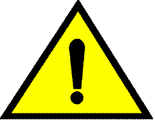Document conventions
The document conventions describe text formatting conventions, command syntax conventions, and important notice formats used in Brocade technical documentation.
Notes, cautions, and warnings
Notes, cautions, and warning statements may be used in this document. They are listed in the order of increasing severity of potential
hazards.
 | CAUTION A Caution statement alerts you to situations that can be potentially hazardous to you or cause damage to hardware, firmware, software, or data.
|
 | DANGER A Danger statement indicates conditions or situations that can be potentially lethal or extremely hazardous to you. Safety labels are also attached directly to products to warn of these conditions or situations.
|
Text formatting conventions
Text formatting conventions such as boldface, italic, or Courier font may be used to highlight specific words or phrases.
| Format | Description |
|---|---|
| bold text |
Identifies command names. Identifies keywords and operands. Identifies the names of GUI elements. Identifies text to enter in the GUI. |
| italic text |
Identifies emphasis. Identifies variables. Identifies document titles. |
| Courier font |
Identifies CLI output. Identifies command syntax examples. |
Command syntax conventions
Bold and italic text identify command syntax components. Delimiters and operators define groupings of parameters and their logical relationships.
| Convention | Description |
|---|---|
| bold text | Identifies command names, keywords, and command options. |
| italic text | Identifies a variable. |
| value | In Fibre Channel products, a fixed value provided as input to a command option is printed in plain text, for example, --show WWN. |
|
[ ] |
Syntax components displayed within square brackets are optional. Default responses to system prompts are enclosed in square brackets. |
|
{ x | y | z } |
A choice of required parameters is enclosed in curly brackets separated by vertical bars. You must select one of the options. In Fibre Channel products, square brackets may be used instead for this purpose. |
|
x | y |
A vertical bar separates mutually exclusive elements. |
|
< > |
Nonprinting characters, for example, passwords, are enclosed in angle brackets. |
| ... |
Repeat the previous element, for example, member[member...]. |
| \ |
Indicates a “soft” line break in command examples. If a backslash separates two lines of a command input, enter the entire command at the prompt without the backslash. |
